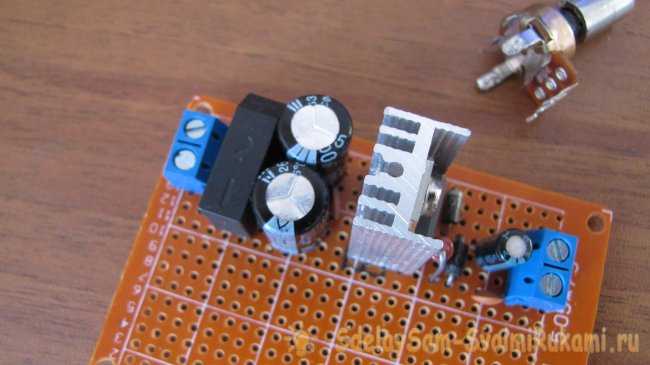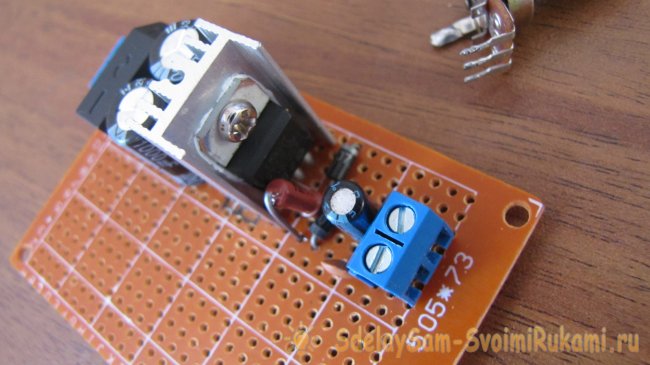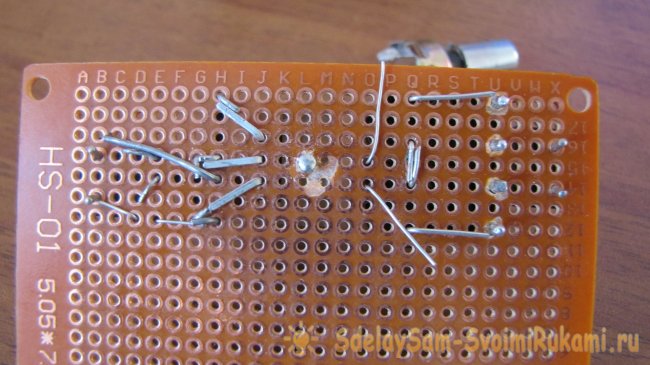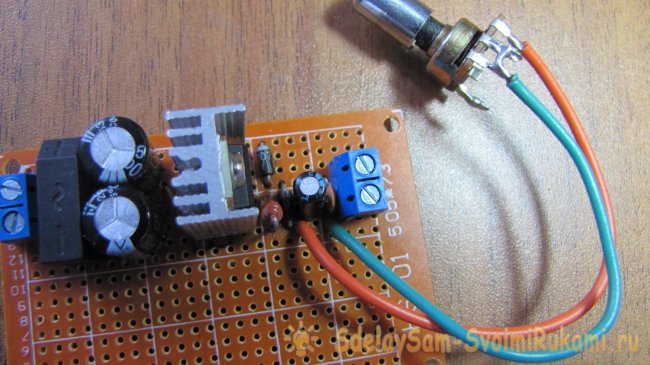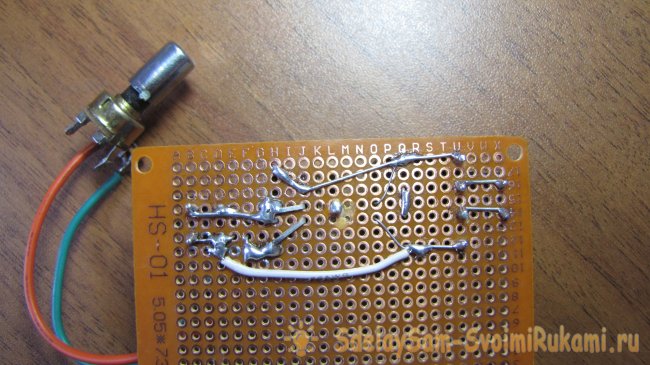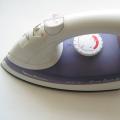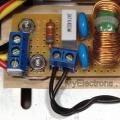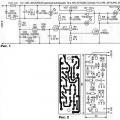This power supply on the LM317 chip does not require any special knowledge for assembly, and after proper installation from serviceable parts, it does not need to be adjusted. Despite its apparent simplicity, this unit is a reliable power source for digital devices and has built-in protection against overheating and overcurrent. The microcircuit has over twenty transistors inside and is a high-tech device, although from the outside it looks like an ordinary transistor.
The power supply of the circuit is designed for voltages up to 40 volts AC, and at the output you can get from 1.2 to 30 volts of constant, stabilized voltage. Adjustment from minimum to maximum with a potentiometer is very smooth, without jumps and dips. Output current up to 1.5 amperes. If the current consumption is not planned to be higher than 250 milliamps, then a radiator is not needed. When consuming a larger load, place the microcircuit on the heat-conducting paste to the radiator with a total dissipation area of 350 - 400 or more, millimeters square. The selection of a power transformer must be calculated based on the fact that the voltage at the input to the power supply should be 10 - 15% more than you plan to receive at the output. It is better to take the power of the supply transformer with a good margin, in order to avoid excessive overheating, and it is imperative to put a fuse selected for power at its input to protect against possible troubles.
For the manufacture of this necessary device, we need the following details:
- Chip LM317 or LM317T.
- Almost any rectifier assembly or separate four diodes for a current of at least 1 ampere each.
- Capacitor C1 from 1000 uF and higher with a voltage of 50 volts, it serves to smooth out surges in the mains voltage and the larger its capacitance, the more stable the output voltage will be.
- C2 and C4 - 0.047 uF. Number 104 on the cap of the capacitor.
- C3 - 1uF and more with a voltage of 50 volts. This capacitor can also be used with a larger capacity to increase the stability of the output voltage.
- D5 and D6 - diodes, for example 1N4007, or any other for a current of 1 ampere or more.
- R1 - potentiometer for 10 Kom. Any type, but always good, otherwise the output voltage will "jump".
- R2 - 220 ohms, power 0.25 - 0.5 watts.
Assembling an adjustable stabilized power supply
I made the assembly on a regular breadboard without any etching. I like this method because of its simplicity. Thanks to him, the scheme can be assembled in a matter of minutes.
